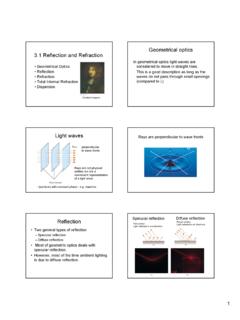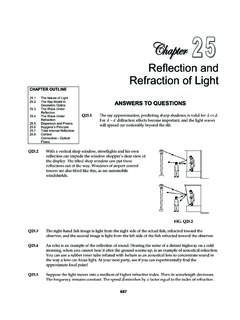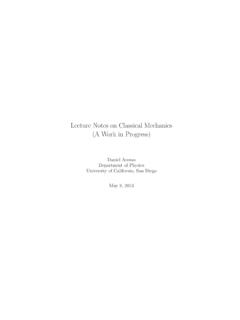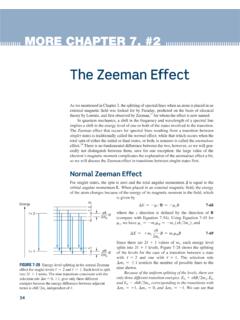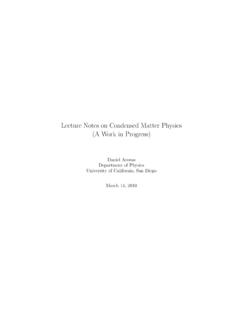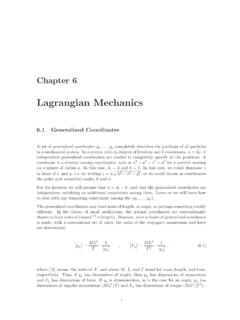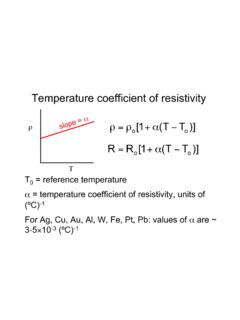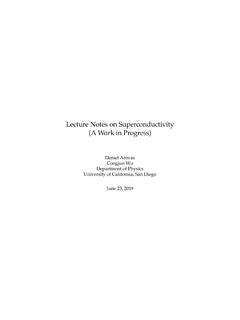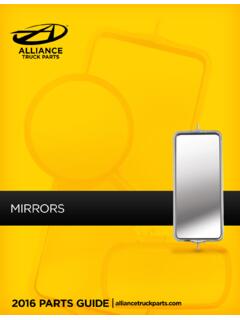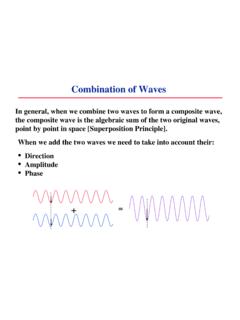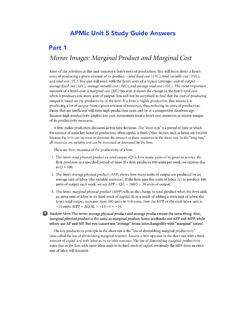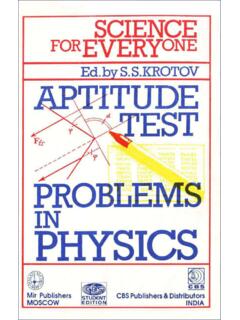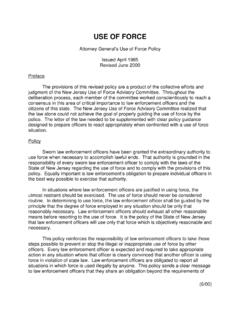Transcription of 3.1.Image formation by Mirrors and Lenses
1 Images formed by Mirrors and Lenses Images Image formation by Mirrors Images formed by lensesObject-Image A physical object is usually observed by reflected light that diverges from the object. An optical system ( Mirrors or Lenses ) can produce an image of the object by redirecting the light. Real Image Virtual ImageReal ImageObjectreal ImageOptical SystemdivergingconvergingdivergingLight passes through the real imageFilm at the position of the real image is ImageObjectvirtual ImageOptical SystemdivergingdivergingLight appears to come from the virtual image but does not pass through the virtual imageFilm at the position of the virtual image is not formed by a plane virtual image is formeddirectly behind the does notpass throughthe imageObjectImageEach point on the image can be determined by tracing 2 rays from the AA objectimagepqA virtual image is formed by a plane mirror at a distance q behind the = -p2 Parabolic Mirrors Parallel rays reflected by a parabolic mirror are focused at a point.
2 Called the Focal Point located on the optic AxisParabolic ReflectorParabolic Mirrors can be used to focus incoming parallel rays to a small areaor to direct rays diverging from a small area into parallel Mirrors Spherical Mirrors are much easier to fabricate than parabolic Mirrors A spherical mirror is an approximation of a parabolicmirror for small curvatures. ( for paraxial rays close to parallel to the optic axis. Spherical Mirrors can be convex or concavelightlightconcaveconvexParallel beams focus at the focal point ofa Concave pointRay tracing with a concave spherical Mirrors A ray parallel to the mirror axis reflects through the focal point, F which is at a point half the radius distance from the mirror along the optic axis. A ray passing through the focal point reflects parallel to the mirror axis A ray striking the center of the mirror reflects symmetrically around the mirror axis A ray that passes through the center of curvature Creflects and passes back through itself FCMirroraxisRF2=Law ofReflectionThe position of the image can be determined from two rays from the object.)
3 F CThe image is real, inverted, reducedWhen object distance > C3A concave mirror can form real and virtual imagesO > CC > O > FF > ORealInvertedReducedRealInvertedEnlarged VirtualUprightEnlargedSimulation of image formation by a were developed at Davidson University by Wolfgang Christian. QuestionWhat image of yourself do you see when you move toward a concave mirror?Far awayReal imageInvertedReducedC<O<FReal imageInvertedMagnifiedO~FMagnified ImageReal or Virtual?4O<FVirtual ImageUprightEnlargedConvex Mirror Image is virtual, upright, reducedRay parallel to the optic axisreflects so that the reflected rayappears to pass through the focal PointA Convex Mirror always forms virtual imagesvirtual, upright, reduced virtual, upright, reducedQuestionDescribe how your image would appear as you approach a convex mirror?Virtual ImageUprightThe image is reduced in size and the field of view is ImageUpright5 Virtual ImageUprightMirror Equation fOIpq111+=pqfp is positivefor real is positive if the light from infinity goes through the focal positivefor concave Mirrors , f negativefor convex mirrorsq is positiveif the light goes through the image real imageq is negativeif light does not go through image virtual imagep object distanceq image distancef - focal lengthMagnification fOIpq'== hqMhphh q positive image is realM is negative - the image is fOIpq'== hqMhphh q is negative the image is virtualM is positive the image is upright.
4 QuestionA boy stands m in front of a concave mirror with a focal length of m. Find the position of the image. Find the magnification. Is the image real or virtual? Is the image inverted or erect?p OIq111+=pqf111= qfp= ( ) = = Real imageinvertedImage formed by refraction Light rays are deflected by refraction through media with different refractive indexes. An image is formed by refraction across flat or curved interfaces and by passage through formed by RefractionooImage of the tipImage formed by refraction through a refracting image formed by iscaused the ray at the interfaceConverging LensesFatter in the middle. Cause light to converge toward the optic axisDiverging LensesThinner in the middleCause light to diverge away from the optic axisParallel light though a converging lens is focused at the focal real image is formedRay tracing for Lenses A line parallel to the lens axis passes through the focal point A line through the center of the lens passes through diagram for a converging lensesObjectImageA converging lens can form real and virtual imagesconverging lightconverging lightdiverging lightRealInvertedreducedRealInvertedEnla rgedVirtualUprightEnlargedAt the focal point the image changesfrom real to virtualQuestionHow will an object viewed through a converging lens appear as the lens is brought closer to the object?
5 Real ImageInvertedReal ImageInvertedMagnifiedVirtual ImageUprightMagnified8 Virtual imageUprightParallel light though a diverging lens appears to go through the focal virtual image is formed by a Diverging lensVirtual UprightReducedA Diverging lens always forms a virtual imageQuestionHow will the image of an object formed by a diverging lens change as the lens is brought closer to the object?Virtual ImageUprightReduced9 Virtual imageUprightReducedVirtual imageUprightReducedThin lens f+=p is positive for real objectsf is positive for converging lensesf is negative for diverging lensesq is positive for real imagesq is negative for virtual and q are positive if light passes throughMagnificationh'qMhp= = for real image q is positive image is invertedfor virtual imageq is negative image is uprightM positive- uprightM negative- invertedExampleAn object is placed 30 cm in front of a converginglens with focal length 10 cm.
6 Find the object distanceand object is placed 30 cm in front of a converginglens with focal length 10 cm. Find the object distanceand f+=111qfp= fpqpf= (10)(30)15cm30 10== = = Real imageInvertedReduced10 Example F30 cm10 cmAn object is placed 30 cm in front of a diverginglens with a focal length of -10 cm. Find the image distance and magnification111pq f+=111qfp= fpqpf= ( 10)(30) ( 10) == Virtual = = =Upright imagereduc
